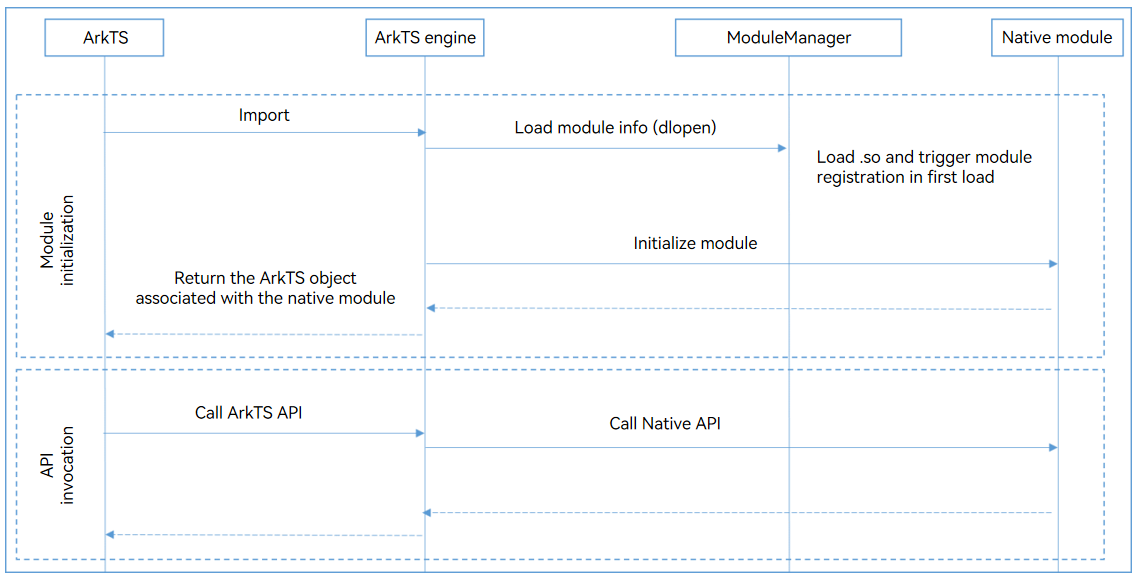harmony 鸿蒙Node-API Overview
Node-API Overview
When to Use
Developed based on the Node.js 12.x LTS Node-API, OpenHarmony Node-API allows interaction between ArkTS/JS and C/C++ modules. It provides a set of stable APIs that can be used on different operating systems.
Unless otherwise specified, Node-API in this document refers to OpenHarmony Node-API.
NOTE
For details about the differences between OpenHarmony Node-API and Node.js 12.x LTS Node-API, see Node-API.
Generally, ArkTS/JS is used for OpenHarmony application development. However, in compute-intensive scenarios, such as games and physical simulations, the existing C/C++ libraries are required to meet the requirements for performance and efficiency. Node-API encapsulates I/O, CPU-intensive, and OS underlying capabilities and exposes these capabilities in the form of ArkTS/JS interfaces to implement interaction between ArkTS/JS and C/C++ code. Node-API provides the following benefits:
The system can open rich module functions of the framework layer to upper-layer applications through the ArkTS/JS APIs.
You can encapsulate core capabilities in C/C++ and use them with ArkTS/JS APIs to improve the execution efficiency of your application.
Node-API Architecture
Figure 1 Node-API architecture

Native module: a module developed using Node-API and imported to ArkTS.
Node-API: implements the logic for interaction between ArkTS and C/C++ code.
ModuleManager: manages native modules, including loading and locating native modules.
ScopeManager: manages the lifecycle of napi_value.
ReferenceManager: manages the lifecycle of napi_ref.
Native engine: ArkTS engine abstraction layer, which unifies the API behavior of the ArkTS engine at the Node-API layer.
ArkCompiler ArkTS Runtime: ArkTS runtime.
Key Interaction Process of Node-API
Figure 2 Key interaction process of Node-API

The interaction between ArkTS and C++ consists of the following two steps:
Initialization: When a native module is imported to ArkTS, the ArkTS engine calls the ModuleManager to load the .so file and dependencies of the module. When the module is loaded for the first time, the module registration is triggered. Then, the method properties defined by the module are embedded to an exports object and the object is returned.
Invocation: When an ArkTS method is called using the exports object, the ArkTS engine locates and calls the embedded C/C++ method.
你可能感兴趣的鸿蒙文章
harmony 鸿蒙Building an NDK Project with CMake
harmony 鸿蒙Building an NDK Project with the DevEco Studio Template
harmony 鸿蒙NDK Project Building Overview
harmony 鸿蒙Building an NDK Project with Prebuilt Libraries
harmony 鸿蒙C/C++ Library Mechanisms
harmony 鸿蒙Creating an NDK Project
- 所属分类: 后端技术
- 本文标签:
热门推荐
-
2、 - 优质文章
-
3、 gate.io
-
7、 openharmony
-
9、 golang